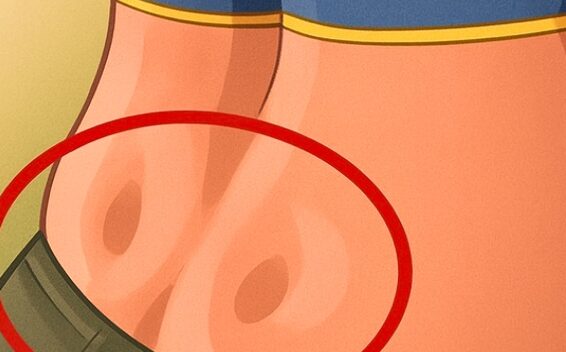
Venus Dimples — Those tiny indentations on the lower back that have fascinated people for centuries. But what’s the story behind these subtle signs of beauty, health, and vitality?
The Anatomy Behind Venus Dimples
It all begins with anatomy. Venus dimples form because of a ligament that connects the skin to the pelvis at the posterior superior iliac spine. This natural attachment creates the small, visible hollows.
While they might look like sculpted muscles, whether you have Venus dimples mainly comes down to genetics. If your parents have them, you’re more likely to have them too. They tend to be more visible in individuals with lower body fat or well-defined muscles — but no amount of exercise can create them if your underlying bone structure and ligaments aren’t naturally set for it.
Apollo Holes: The Male Equivalent
Though Venus dimples are most commonly associated with women, men can have similar indentations called Apollo holes. Both features have been linked to good circulation, fitness, and an attractive physique. In today’s health and wellness world, they’re seen as subtle indicators of vitality and overall well-being.
Can Exercise Make Them Appear?
One common question: Can you develop Venus dimples through exercise? The truth is no — their existence depends on bone structure and ligament placement. However, living a healthy lifestyle, reducing body fat, and strengthening muscles can make these dimples more noticeable in those who naturally have them.
More Than Just Looks
Some believe Venus dimples signify more than just beauty — they may also indicate better blood flow in the pelvic region, potentially enhancing sexual function. While scientific evidence is limited, these ideas have added to the dimples’ allure across different cultures.
Cultural Meaning and Contemporary Appeal
Throughout history, small physical traits like dimples have been admired as symbols of charm and individuality. Today, Venus dimples continue to be celebrated, often featured in fitness media and social platforms as subtle badges of dedication to health and body care. Their true appeal lies not in perfection but in their uniqueness.
Celebrating Individuality
It’s important to remember that not having Venus dimples or Apollo holes doesn’t mean you’re any less healthy or attractive. They’re just one of many natural variations shaped by genetics. What truly counts is embracing your body’s unique traits and focusing on overall wellness.
Final Reflection
Though small, Venus dimples and Apollo holes have captured attention for centuries. They remind us that beauty often lives in details beyond our control — shaped by nature and passed down through generations. Whether seen as symbols of vitality, marks of beauty, or simply fascinating aspects of human anatomy, they celebrate the incredible diversity of the human body — and that’s something truly worth appreciating.